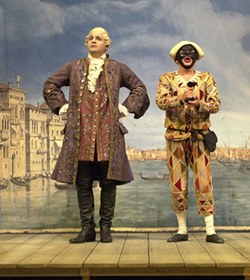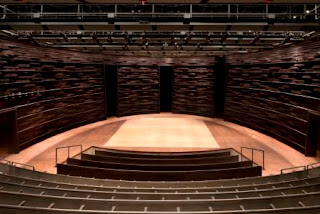 Casting is a very important aspect of Commedia Dell'arte. Different stock characters are reliant on different body types, and the overall meld of the cast is also important. In most show's, it is important to only choose the people that are right for the part, but in these situations where the outcome is based on the chemistry of the cast as a whole, it is important to cast people that all work well together. Going off the idea of Commedia Dell'arte, stock characters are dependent on certain body-types. For example Florindo, or the Capitano stock character, needs to be someone of higher stature with a built body. The typical stereotype is a big strong man that is charismatic, so casting a small, lanky, quiet person would not be the best choice. The same can be said of Truffaldino, in that casting someone small and lanky would be ideal. He is constantly stating how hungry he is and how he would do everything for food, and having a large individual would not ring true in the imaginary circumstance. So in a way, casting is one of the most important aspects of this performance.
Casting is a very important aspect of Commedia Dell'arte. Different stock characters are reliant on different body types, and the overall meld of the cast is also important. In most show's, it is important to only choose the people that are right for the part, but in these situations where the outcome is based on the chemistry of the cast as a whole, it is important to cast people that all work well together. Going off the idea of Commedia Dell'arte, stock characters are dependent on certain body-types. For example Florindo, or the Capitano stock character, needs to be someone of higher stature with a built body. The typical stereotype is a big strong man that is charismatic, so casting a small, lanky, quiet person would not be the best choice. The same can be said of Truffaldino, in that casting someone small and lanky would be ideal. He is constantly stating how hungry he is and how he would do everything for food, and having a large individual would not ring true in the imaginary circumstance. So in a way, casting is one of the most important aspects of this performance.Work Cited:
Google Images Search: "servant of two masters"





